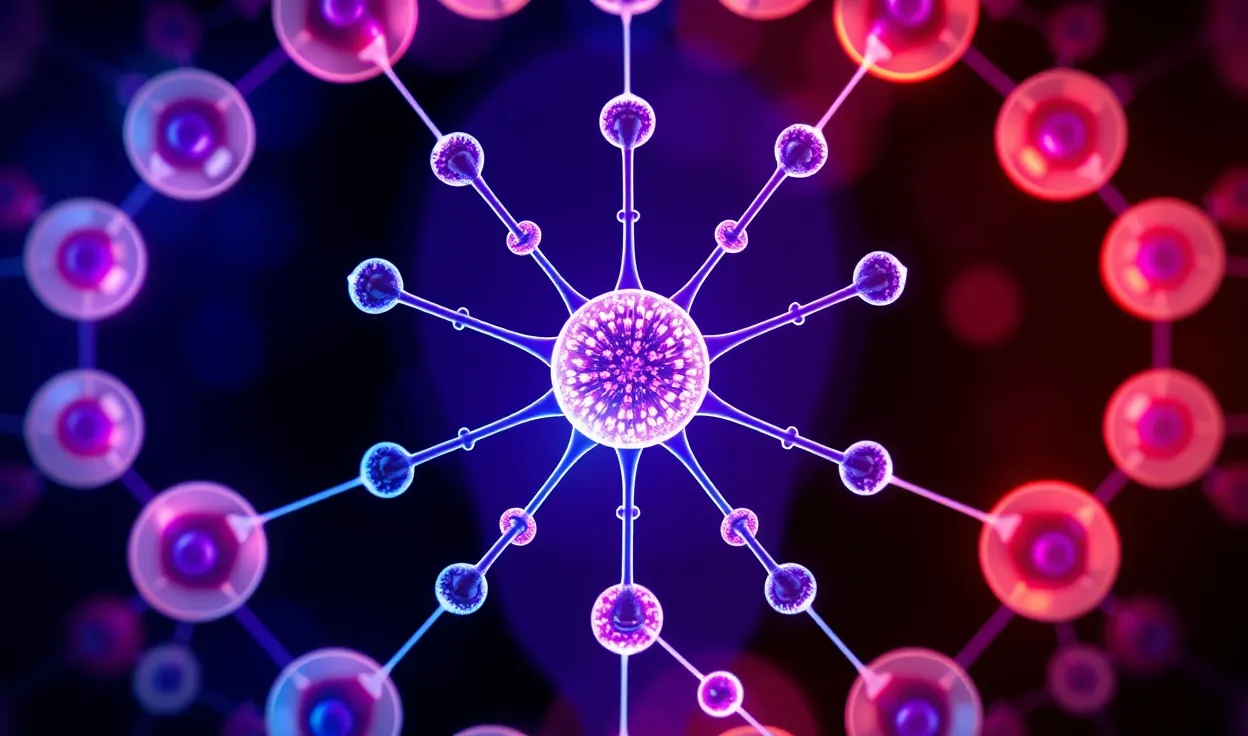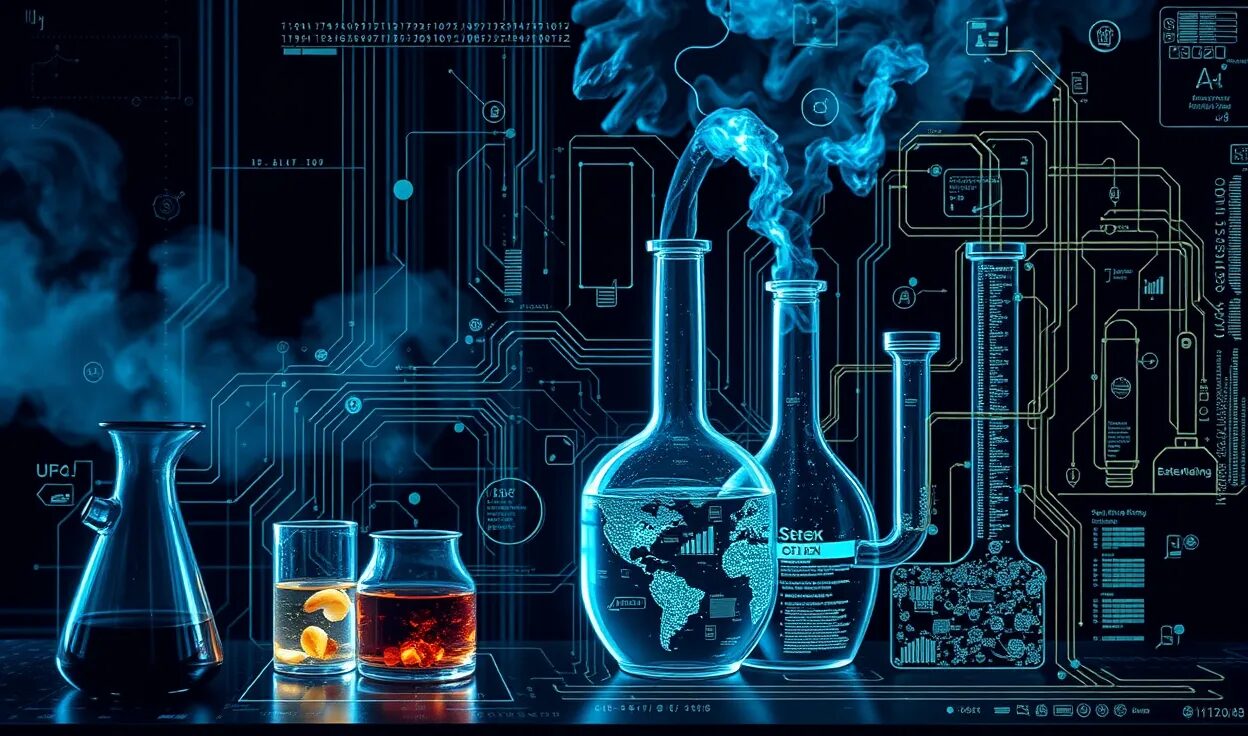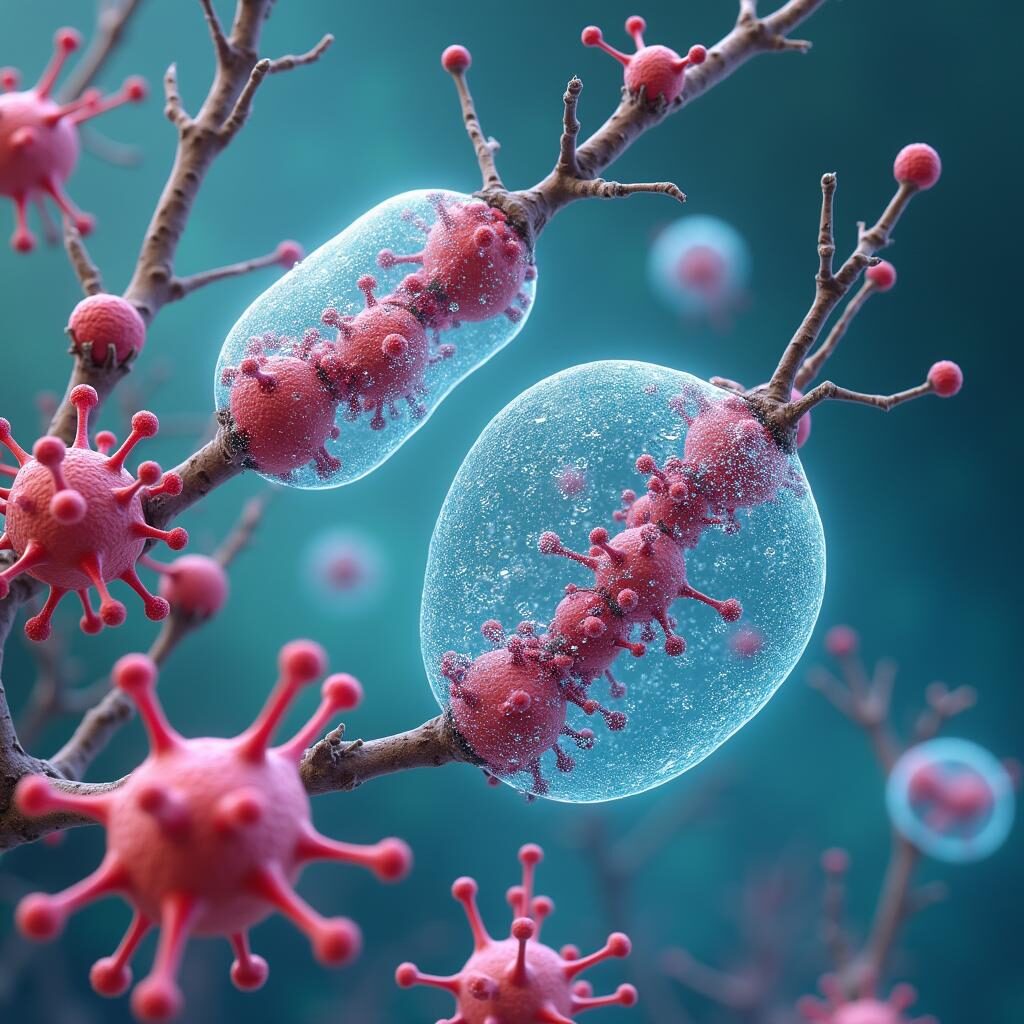
The Dawn of Living Machines
What Are Living Machines?
Living machines represent the fusion of synthetic biology and artificial intelligence (AI), creating systems that mimic life. Unlike traditional robots, these machines can grow, self-repair, and adapt to their environment.
At the heart of these innovations lies synthetic biology, which rewrites genetic blueprints, and AI, enabling complex decision-making. Together, they produce biological machines capable of performing specialized tasks. These range from environmental cleanup to precise drug delivery.
Why Now?
Recent advancements in CRISPR gene editing and AI algorithms have accelerated the potential of hybrid systems. Researchers can now design programmable organisms while AI continuously optimizes their function. This synergy opens doors to previously unattainable solutions in medicine, agriculture, and technology.
How AI Enhances Synthetic Biology
Streamlining Design and Functionality
AI simplifies the creation of synthetic organisms by predicting the effects of genetic modifications. This ensures that designs are optimal before physical implementation, drastically reducing research costs and time.
Machine learning models analyze massive datasets, identifying ideal genetic combinations for specific functions. For example, AI tools predict how organisms respond to environmental stimuli, enhancing their ability to adapt.
Real-Time Control Through AI
AI isn’t limited to design; it provides real-time monitoring and control. Hybrid systems use sensors to send data to AI systems, which make instant adjustments. For instance, AI-controlled bacteria could alter their metabolism to survive fluctuating conditions or optimize their task performance.
The Biology-AI Feedback Loop
A Two-Way Learning System
Hybrid systems operate through a continuous feedback loop. AI programs the organisms, which perform tasks, and the data they generate is fed back to refine the AI. This iterative cycle mimics evolution but occurs exponentially faster.
Applications in Adaptive Systems
In agriculture, bioengineered crops could use AI guidance to adapt to climate variations, ensuring resilience. In healthcare, engineered cells could dynamically adjust their behavior to combat diseases, directed by real-time AI input.
Ethics and Safety Concerns
Addressing Unintended Consequences
While the potential of hybrid systems is vast, they carry risks. Misprogrammed organisms could inadvertently disrupt ecosystems or cause harm. For example, engineered bacteria might unintentionally outcompete native species, leading to ecological imbalances.
Regulatory Measures and Transparency
Strong regulations are essential to mitigate these risks. Collaboration among scientists, policymakers, and the public ensures that hybrid systems are developed responsibly. Organizations like the World Health Organization (WHO) play critical roles in establishing ethical guidelines.
Current Innovations and Projects
Xenobots: Tiny Hybrid Machines
One notable innovation is xenobots—microscopic, AI-designed organisms made from frog cells. These can move autonomously, work collaboratively, and even repair themselves. Potential applications include targeted medicine and environmental cleanup.
Living Materials for Construction
Hybrid systems are also producing living materials capable of growth and self-repair. These bioengineered materials, fine-tuned by AI, could revolutionize construction by being both durable and sustainable.
Applications of Hybrid Systems in Key Industries
Transforming Energy Solutions
Hybrid systems could revolutionize renewable energy by creating bioengineered microorganisms that generate sustainable power. These organisms, guided by AI, are designed to convert sunlight, carbon dioxide, or waste into usable energy forms such as biofuels or hydrogen.
Imagine algae that efficiently produce biofuels, with AI optimizing growth conditions. Similarly, bacteria could be engineered to break down organic waste, generating methane for energy. These technologies promise cleaner and more efficient energy solutions.
Environmental Restoration and Conservation
Hybrid systems offer innovative ways to combat environmental challenges. For example, AI-controlled bacteria could clean up oil spills by metabolizing hydrocarbons without disrupting marine ecosystems.
Another exciting application is bioengineered plants that sequester carbon more efficiently, mitigating climate change. AI can monitor and adapt these systems in real-time, ensuring effectiveness and scalability for large-scale restoration efforts.
Revolutionizing Healthcare

Precision Medicine with Living Machines
In healthcare, hybrid systems are pushing the boundaries of precision medicine. AI-programmed cells can target and destroy cancer cells without harming healthy tissue. These “living drugs” adapt to a patient’s condition, offering personalized treatment with minimal side effects.
Additionally, bioengineered sensors could monitor internal body conditions, sending real-time updates to AI systems. This enables immediate medical interventions, significantly improving outcomes for patients with chronic or critical conditions.
Accelerating Drug Development
AI-integrated synthetic biology is streamlining drug development by testing compounds on engineered cells that mimic human tissues. This reduces the time and cost of research, paving the way for faster treatments for diseases like Alzheimer’s and diabetes.
Shaping the Future of Robotics
Biohybrid Robots with Living Components
Hybrid systems are also advancing robotics by integrating living tissues into machines. These biohybrid robots combine the strength of synthetic materials with the adaptability of living cells. For instance, soft robots powered by muscle cells can move fluidly, mimicking natural organisms.
Such robots have applications in medical procedures, like navigating inside the body to deliver drugs or perform microsurgeries. AI ensures precise control and coordination of these living components.
Evolutionary Design Through AI
With AI and synthetic biology working together, robots can now “evolve.” By testing and refining biohybrid designs in virtual environments, AI accelerates the development of robots that adapt to diverse conditions, such as extreme temperatures or pressures.

Societal Impacts of Living Machines
Job Creation and Economic Growth
The rise of hybrid systems is creating new industries and job opportunities. Fields like bioengineering, AI development, and biomanufacturing are in demand, driving economic growth and innovation.
Ethical Considerations for Society
However, as living machines become more prevalent, ethical concerns grow. What rights, if any, should these semi-living systems have? How do we prevent misuse of these technologies in warfar.
Visionary Possibilities and the Long-Term Outlook
Building Sustainable Cities with Living Systems
In the future, hybrid systems could be instrumental in developing self-sustaining cities. Imagine buildings made from living materials that grow, repair damage, and adapt to environmental changes. These bioengineered structures, controlled by AI, could optimize insulation, harness solar energy, or even purify the air.
Green infrastructure, such as AI-managed forests or wetlands, could further integrate with urban environments. These systems would balance human needs with ecosystem health, reducing the ecological footprint of cities.
Space Exploration and Colonization
Hybrid systems might play a pivotal role in space exploration. Bioengineered organisms could produce oxygen, food, and fuel for astronauts, ensuring long-term sustainability during deep-space missions. AI would monitor and adapt these systems to the harsh conditions of space.
On Mars or other planets, living machines could prepare the terrain for human settlement. For example, bacteria programmed to process Martian soil into fertile land could lay the groundwork for future colonies.
FAQs
Can living machines repair themselves?
Yes, many living machines can self-repair, a unique feature enabled by their biological components. For instance, biohybrid robots powered by muscle cells can heal minor tears in their tissue, extending their lifespan and efficiency.
In practice, this could mean robots designed for hazardous environments like underwater pipelines can fix themselves without human intervention.
Are hybrid systems safe for the environment?
Hybrid systems can be safe if carefully designed and regulated. By tailoring organisms to specific tasks, scientists minimize ecological disruption.
For example, AI-controlled bacteria used for oil spill cleanup can be programmed to die off after completing their task, preventing them from spreading uncontrollably in the ecosystem.
What are the real-world applications of living machines?
Living machines are already being explored in various fields:
- Healthcare: Programmable cells for precision medicine can target diseases like cancer while sparing healthy cells.
- Environmental restoration: Bioengineered organisms are cleaning up pollutants or restoring damaged ecosystems.
- Construction: Living materials like bioengineered concrete grow and repair themselves, reducing maintenance costs.
Each application demonstrates the versatility and transformative potential of hybrid systems.
Could living machines replace traditional robots?
Not entirely. Traditional robots excel in tasks requiring precision, speed, and durability, while living machines thrive in environments where adaptability and self-repair are critical.
For instance, a living machine might excel in soft robotics for medical applications, while traditional robots remain better suited for manufacturing assembly lines.
What ethical concerns surround hybrid systems?
Ethical concerns include misuse of the technology, unintended ecological consequences, and the potential creation of conscious organisms.
To address these issues, organizations like the World Health Organization and UNESCO are working on guidelines to ensure responsible research and application. Public awareness and transparency in development are also key.
Can hybrid systems help combat climate change?
Absolutely. AI-engineered organisms are being designed to capture carbon dioxide, generate clean energy, and restore ecosystems.
For instance, bioengineered algae can convert CO2 into biofuels while producing oxygen, offering a dual benefit for both energy production and climate mitigation.
How are hybrid systems used in agriculture?
Hybrid systems are revolutionizing agriculture by creating bioengineered crops and microorganisms tailored for sustainable farming.
For example, AI-optimized nitrogen-fixing bacteria can reduce the need for chemical fertilizers, promoting healthier soil and reducing environmental damage. Similarly, crops enhanced through synthetic biology can resist pests or adapt to changing climates.
Do hybrid systems have military applications?
Yes, hybrid systems could be used for military purposes, but this raises ethical concerns. Potential applications include self-repairing drones, bioengineered camouflage organisms, or AI-driven biological sensors that detect chemical or biological threats.
For instance, living machines could deploy in remote locations to gather environmental data or repair damaged infrastructure under hostile conditions.
How do hybrid systems compare to traditional genetic engineering?
Hybrid systems go beyond traditional genetic engineering by integrating AI for real-time control and dynamic adaptation. Traditional methods often involve static genetic edits, while hybrid systems create organisms capable of learning and evolving.
An example is adaptive probiotics—engineered gut bacteria that adjust their behavior based on an individual’s unique microbiome, unlike static formulations found in traditional probiotics.
Are there any current projects involving hybrid systems?
Yes, notable projects include:
- Xenobots: AI-designed biological robots capable of performing tasks like cleaning microplastics from water.
- Living construction materials: Research into bioengineered bricks that grow and repair themselves.
- Biofuel bacteria: Microorganisms designed to convert agricultural waste into sustainable fuel.
These examples highlight the ongoing innovation in hybrid systems research.
Can hybrid systems be used in space exploration?
Yes, hybrid systems are ideal for space exploration due to their adaptability and efficiency. Bioengineered organisms could generate oxygen, recycle waste, or produce food in space habitats.
For example, researchers are exploring AI-controlled cyanobacteria that can thrive in Martian soil to produce resources for human colonies.
How do hybrid systems impact biodiversity?
Hybrid systems have the potential to both protect and disrupt biodiversity. They can aid conservation by restoring habitats and supporting endangered species. However, unintended consequences like invasive behavior could harm ecosystems if not carefully controlled.
For instance, bioengineered trees designed for rapid growth might inadvertently outcompete native species without strict safeguards.
Will hybrid systems interact with human-made devices?
Yes, hybrid systems are being designed to integrate with traditional technologies. Examples include biohybrid sensors that interact with electronic devices or AI-controlled organisms that assist in robotic systems.
Imagine living prosthetics where bioengineered tissues respond to nerve signals, seamlessly combining biology and technology for improved functionality.
How expensive are hybrid systems to develop?
Currently, hybrid systems are costly due to the advanced technology and expertise required. However, as tools like AI and CRISPR become more accessible, development costs are decreasing.
For example, the cost of gene-editing technologies has dropped significantly in recent years, making innovations like synthetic biofuels or personalized medicine more feasible.
Could hybrid systems achieve consciousness?
This is a hotly debated topic. While current hybrid systems operate through programmed responses and AI-driven algorithms, achieving true consciousness remains speculative.
The potential arises as AI becomes more advanced, raising philosophical and ethical questions about what constitutes life and awareness. Researchers agree that strict safeguards are essential before pursuing such avenues.
Resources
Books and Academic Literature
- “Synthetic Biology: A Primer” by Paul S. Freemont and Richard I. Kitney
A foundational text that explains synthetic biology concepts and applications in an accessible way. - “AI in Biological Engineering” by Sandro Carrara
This book delves into the role of AI in advancing biological engineering and hybrid systems. - Research Papers
- “Xenobots: Biological Machines Built from Frog Cells” (Douglas Blackiston et al., 2020)
- “AI-Driven Synthetic Biology” (Nature Biotechnology, Special Issue)
Online Courses and Lectures
- edX: Synthetic Biology Fundamentals
Offered by institutions like MIT and Harvard, these courses explore the basics of synthetic biology. - Coursera: Artificial Intelligence in Biology
Learn how AI is transforming the field of biology with case studies and real-world applications. - YouTube: TED Talks on Synthetic Biology and AI
Talks like “Can We Engineer Life?” by Drew Endy and others offer inspiring perspectives.
Websites and Portals
- SynBioBeta (https://synbiobeta.com)
Stay updated on the latest news, innovations, and industry events in synthetic biology. - AI in Biology (https://ai4bio.org)
A community-driven platform focusing on AI applications in biology and hybrid systems. - CRISPR Journal (https://crisprjournal.com)
Offers insights into advances in genetic engineering and its integration with AI.
Industry and Research Organizations
- Wyss Institute for Biologically Inspired Engineering
Harvard’s Wyss Institute is leading in the development of living materials and hybrid systems.
Website: https://wyss.harvard.edu - DARPA: Biological Technologies Office (BTO)
Focuses on cutting-edge research in biohybrid systems for defense and beyond. - Synthetic Biology Center at MIT
A hub for pioneering work in engineering biological systems.
News and Updates
- Scientific American
Regular articles on breakthroughs in synthetic biology and AI applications. - Nature Biotechnology
Covers cutting-edge research, including biohybrid and AI-driven biology topics. - TechCrunch: Biotech Section
Reports on startups and innovations at the intersection of AI and biology.
Community Forums and Networking
- Reddit: r/SyntheticBiology
Engage with a community of enthusiasts, researchers, and professionals. - LinkedIn Groups: AI in Biology
Join discussions with industry leaders and stay informed about conferences and workshops. - Meetup: Biohacking and Synthetic Biology Groups
Explore local and virtual events to connect with like-minded individuals.